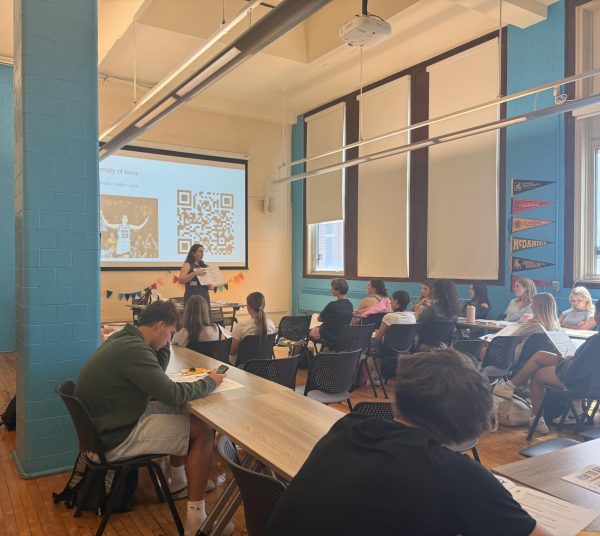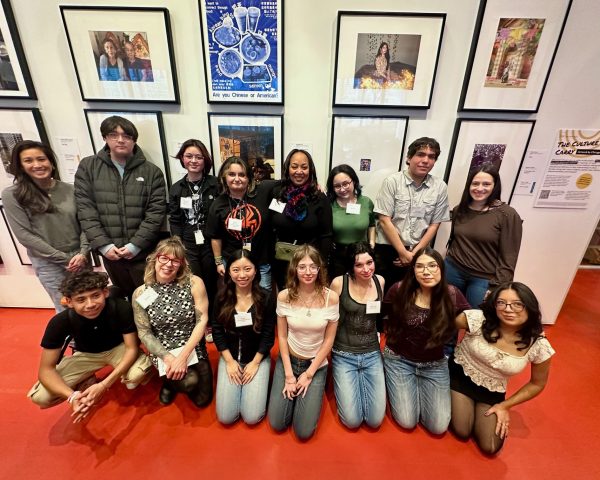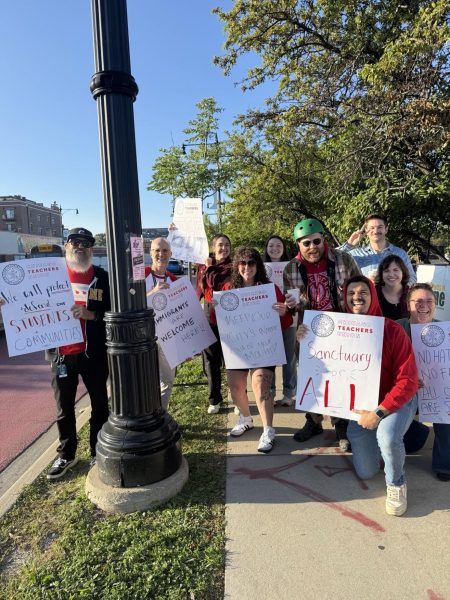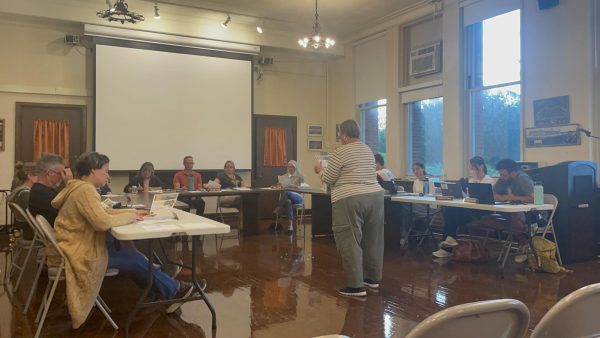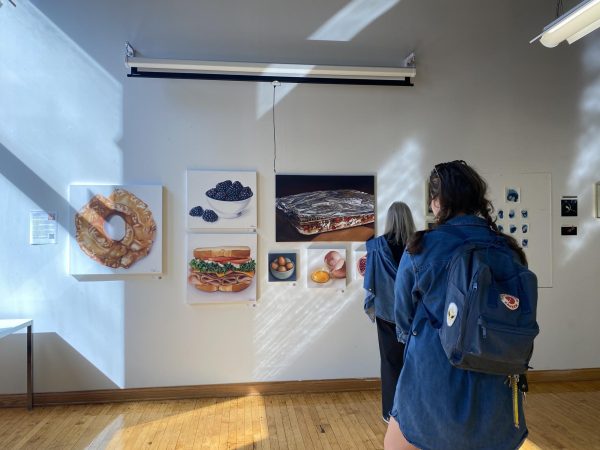Decline in Black teachers reflects broader trend in CPS, Illinois
For Jennile O’Connor, coming to Lane from a predominantly African-American elementary school was initially not a shock until she realized how “drastic” the discrepancy in minority teachers was.
“In the classes that I have been in over the past four years now there have only been around four teachers that I have had that were Black,” O’Connor said. “At first, It didn’t seem like a big deal. As I am coming here I assumed [the amount of minority teachers] would be less than my elementary school. But it is drastically less than I would think.” With exasperation, she couldn’t help but wonder, where are all the Black teachers?
O’Connor, Div. 763, represents just one of the cases of minority students who find themselves in a huge environment surrounded by people who don’t look like them. Finding an adult role model who relates to them is especially challenging.
“If a student’s teachers are people that are drastically different from them, they can’t really make that connection on certain personal levels,” O’Connor said.
As an elementary school student, she was inspired by an African-American teacher who served as a role model that she could relate to and see parts of herself in.
“My elementary school teacher was the epitome of what an African-American woman aware of her culture but at the same time open to working with students from other backgrounds [should be],” O’Connor said.
According to Illinois State Board of Education teacher demographics, only six percent of Illinois teachers are African-American. This is a steady decline from the 2007 statistics of only nine percent of Illinois teachers being African-American.
In the near three decades since 1990, the percentage of African-American teachers working in CPS has plummeted from 48 to 22 percent, according to CPS’ Illinois State Report Card.
Some have attributed this decline to the high number of school closings in predominantly African-American and Hispanic neighborhoods. According to the Chicago Tribune, CPS closed 53 schools in 2013. Almost of the closed schools were located on the West and South Sides.
According to the Chicago Teachers Union, these schools have predominantly minority students.
The Sun-Times has also linked the decline in Black teachers to the resulting layoffs of the aforementioned closings that disproportionately affected African-American teachers.
Mr. Cockrell, the only male African-American teacher at Lane, can attest to this decline in the Lane staff over the 13 years he has worked here.
“In my early years, when I first started, if I had to put a number, probably between 12-15 Black teachers worked here,” Cockrell said. Today, with the exception of ROTC and counselors, there are fewer than ten African-American teachers who work at Lane.
Nowadays, the majority of these African-American teachers are in the History and English department, English being the most concentrated.
“I realize that our staff diversity is not racially or ethnically comparable with our student diversity,” Assistant Principal Mrs. Thompson said. “This is also the case across the district.”
In regards to the comparison between teacher and student diversity at Lane, less than 9 percent of the staff is Hispanic, while 46 percent of the student body is Hispanic. This disparity between teacher and student diversity in school starts off in undergraduate educator classrooms as well.
“In both my undergraduate and graduate degree programs there were few to no African-Americans who were pursuing degrees in education,” Thompson said. “However, there was also a low percentage of African-Americans who attended both my undergraduate and graduate universities.”
According to the U.S. Department of Education, in 2011-2012 only 37 percent of all students enrolled in higher education institutions were individuals of color. Out of this 37 percent, only 25 percent of individuals enrolled in a teacher preparation program based in an higher education institution were individuals of color.
Lane is a special case, in the sense that although there is a lack of diversity in the staff, according to Thompson and Cockrell, African-American teachers try not to define themselves solely by their race or ethnicity.
“Am I really the only one?” were the exact awe-filled words Mr. Cockrell said, when he heard the fact about him being the only male African-American teacher.
“In terms of being the only African-American male teacher I haven’t had any negative experiences as a result,” Cockrell said. “If anything, I basically try to whenever possible, bring a different opinion or shed light on different topics, whether that be from a different perspective or just educating someone from a different background or perspective.”
For Cockrell, the teachers he had growing up inspired him to become a teacher. He said they showcased how fulfilling living a positive life and going into education was. Cockrell said he was very fortunate to have teachers who resembled him in background, race or ethnicity because they understood his cultural norms and aspects better than non minority teachers could have.
“I definitely feel that it was some of the teachers who I had when I was younger who happened to be from a similar racial group, ethnic group or cultural background as me who understood where I came from and how that society affected me,” Cockrell said. “[They were] someone I could see as a role model, who basically helped me figure out myself and guide me to go down a positive path.”
As a result of the decline in minority teachers, Cockrell said schools are in danger of becoming more culturally, ethnically, and even racially unaware — and not only unaware but also naive or ignorant.
In her earlier years of teaching and creating the Black Student Association, Thompson noticed hesitance in the face of her peers when it came to contributing to the BSA. That hesitance soon transformed into acceptance and involvement.
“I would say the greatest impact of the lack of staff diversity was when I was a sponsor of the Black Student Association,” Thompson said. “Sometimes we typically tend to seek help from people we feel have a connection to the cause for which we are working, but I quickly learned that there were many teachers of various races, who were willing to help highlight African American culture within our building.”
Minority awareness seems to grow every year despite the decline in diversity. Lane is a community of students of all shapes, sizes, and backgrounds. According to Thompson, the goal isn’t just to hire Black teachers but to hire the best teachers. Teachers and students alike believe in the importance of minority teachers.
Lane is a long way from having a diverse staff similar to that of the student body. But as of now, African-American teachers at Lane believe in the caring and supportive community atmosphere in the school.
“Although Lane’s staff racial makeup is not as diverse as the student body, our dedication to student success and willingness to support students inside and outside of the classroom helps students of all races feel like Lane is a place where they can find support while navigating through secondary education experiences,” Thompson said. “ Are we perfect, no. Are we a family, yes.”
Your donations directly fund the Lane Tech student journalism program—covering essential costs like website hosting and technology not supported by our school or district. Your generosity empowers our student reporters to investigate, write, and publish impactful stories that matter to our school community.
This website is more than a publishing platform—it's an archive, a research tool, and a source of truth. Every dollar helps us preserve and grow this resource so future students can learn from and build on the work being done today.
Thank you for supporting the next generation of journalists at Lane Tech College Prep!

Esther Babawande is the first child of Nigerian immigrants and a true Chicagoan who loves her city and her high school, Lane Tech. Esther is a Christian....


